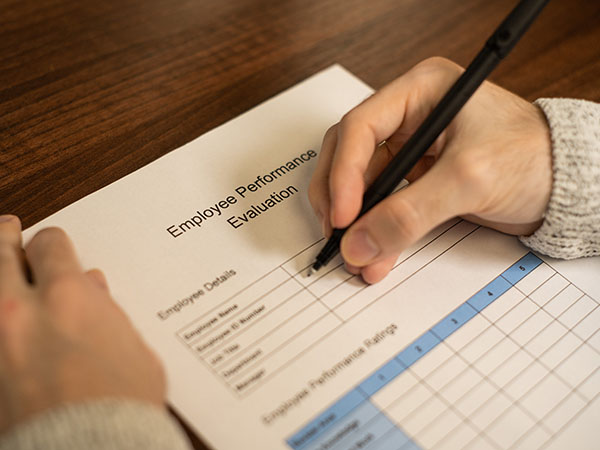Strategies to Evaluate Employee Performance: A Roadmap to Success
|
Jan 31, 2024 - By the dedicated team of editors and writers at Newsletter Station.

|
As businesses strive for excellence and growth, evaluating employee performance is one of the most critical aspects. A well-structured and efficient performance evaluation process helps identify and identify top recognized fosters a culture of continuous improvement.
This blog will explore practical strategies to evaluate employee performance, ensuring that your workforce is motivated, engaged, and aligned with the organization's goals.
- Set Clear Performance Expectations
The foundation of an effective performance evaluation process lies in setting clear and specific performance expectations. Employees need to know what is expected of them regarding goals, targets, and key performance indicators (KPIs). These expectations should be communicated at the beginning of each performance cycle, with regular check-ins to ensure employees are on track and have the necessary support to achieve their objectives.
- Use SMART Goals
Adopting the SMART (Specific, Measurable, Achievable, Relevant, and Time-bound) goal-setting framework is invaluable when setting performance expectations. SMART goals provide employees with a roadmap for success, as they are specific enough to provide clarity, measurable to track progress, achievable to maintain motivation, relevant to the employee's role, and time-bound to create a sense of urgency.
- Provide Regular Feedback
Performance evaluation shouldn't be a one-off event. Regular feedback sessions throughout the performance cycle are crucial for employee development. Managers should engage in open and constructive conversations with employees, offering praise for accomplishments and providing guidance on areas that need improvement. These feedback sessions also create opportunities for employees to share their concerns and suggestions.
- Utilize 360-Degree Feedback
Incorporating 360-degree feedback into the evaluation process provides a comprehensive view of an employee's performance. This involves gathering feedback from peers, subordinates, managers, and clients or customers. Multiple perspectives offer a well-rounded understanding of an employee's strengths and areas for improvement, fostering a culture of collaboration and teamwork.
- Implement Performance Rating Scales
Performance rating scales help standardize the evaluation process and make it objective. These scales often range from poor to outstanding, clearly indicating an employee's performance level. However, ensuring that these scales are well-defined and evaluators are trained to use them consistently is essential.
- Assess Competencies and Skills
Beyond meeting specific job-related goals, evaluating employees' competencies and skills is crucial for their overall growth and success. Assessing soft skills, such as communication, problem-solving, teamwork, and adaptability, helps identify areas where employees can enhance their abilities to contribute more effectively to the organization.
- Encourage Self-Assessment
Incorporating self-assessment in the evaluation process empowers employees to reflect on their performance, strengths, and areas for improvement. It promotes self-awareness and accountability and allows employees to take ownership of their professional development.
- Recognize and Reward Performance
Recognizing and rewarding high-performing employees is a powerful way to motivate and retain top talent. Acknowledging their contributions through formal awards, promotions, bonuses, or even simple praise and appreciation can boost employee morale and foster a culture of excellence.
Evaluating employee performance is a fundamental aspect of nurturing a high-performing workforce. Organizations can create an efficient and objective performance evaluation process by setting clear expectations, using SMART goals, providing regular feedback, and implementing well-defined rating scales. Encouraging 360-degree feedback, assessing competencies, and promoting self-assessment contribute to employee growth and development.
Finally, recognizing and rewarding outstanding performance cements a positive culture, inspiring employees to continually excel and donate to the organization's success. With these strategies in place, businesses can build a motivated, engaged workforce aligned with the company's long-term goals.
Unlock the Power of Email Marketing
Harness the potential of email marketing with Newsletter Station. Reach your target audience, drive conversions, and achieve your business goals.
|
More Blogs
| May 1, 2024 |
The Art of Selling Your Business to the Right Job Candidate
|
| Apr 24, 2024 |
Cultivating Continuous Learning: Nurturing Your Workforce's Growth
|
| Apr 17, 2024 |
Signs that You Have a Toxic Workplace: Recognizing the Red Flags
|
| Apr 10, 2024 |
Exploring the Pros and Cons of Rehiring Former Employees
|
| Apr 3, 2024 |
Navigating the Pitfalls: What Businesses are Getting Wrong About Hybrid Work
|
| Mar 27, 2024 |
Mastering the Art of Interview Techniques: Vetting Your Applicants Like a Pro
|
| Mar 20, 2024 |
Supporting Your Team: Identifying and Assisting a Struggling Employee
|
| Mar 13, 2024 |
Identifying Red Flags: Signs an Employee May Not Be the Right Fit
|
| Mar 6, 2024 |
Is Flexible Scheduling Right for Your Team?
|
| Feb 28, 2024 |
Elevate Your Hiring Process: Effective Strategies to Attract Top Talent
|
| Feb 21, 2024 |
Navigating the Maze: Understanding and Avoiding Wrongful Termination of Employees
|
| Feb 14, 2024 |
Beyond Dollars: Exploring Employee Rewards That Truly Matter
|
|
|
|